What is Steel Black Oxidation?
Black oxide, also known as blackening or blackening oxide, is a conversion coating applied to ferrous metals, such as steel and iron, to provide several key benefits:
Corrosion Resistance: Black oxide forms a thin, adherent layer on the metal surface, which acts as a protective barrier against corrosion and rust. This makes it particularly useful for improving the longevity of metal components.
Appearance: One of the primary reasons for applying black oxide is to create a black or dark gray finish on the metal. This is often done for aesthetic purposes or to provide a non-reflective surface.
Reduced Light Glare: The blackened surface has reduced reflectivity, which can be beneficial in applications where glare from shiny metal surfaces is a concern, such as in optical devices or firearms.
Enhanced Lubricity: Black oxide can improve the lubricity of metal parts, making them smoother to the touch and reducing friction.
The process of blackening metal involves immersing the parts in a hot alkaline solution containing various oxidizing agents, such as sodium nitrate or nitric acid. This process chemically converts the outer layer of the metal into magnetite (Fe3O4) or other iron oxide compounds, which provide the characteristic dark color and corrosion resistance.
Black oxide is commonly used in various industries, including firearms manufacturing, automotive, industrial equipment, and decorative hardware. It is valued for its combination of protective properties and the attractive, non-reflective finish it imparts to metal surfaces.
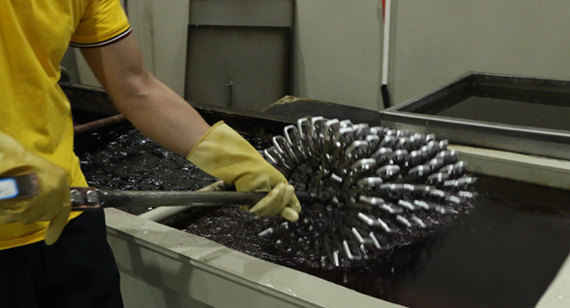
What is Thermal Oxidation Black?
“Thermal oxidation black” usually refers to a thermal oxidation surface treatment, also known as thermal oxidation blackening or high temperature oxidation. This is a process in which metal pieces are heated to high temperatures and treated in an oxygen atmosphere to produce a layer of oxide, usually iron oxide (Fe3O4), which gives the metal surface a deep black appearance.
The process of thermal oxidation black usually includes the following steps:
Preparing Metal Surfaces: Metal surfaces must first be thoroughly cleaned and treated to remove any grease, dirt or oxides.
Preheating metal parts: Metal parts are heated to high temperatures, usually above 500°C (932°F), depending on the type of material and the desired effect.
Oxygen atmosphere: At high temperatures, metal parts are in an oxygen atmosphere. oxygen and gold
Cooling and Sealing: After processing, the metal parts are typically cooled and then sealed to stabilize the oxide layer and provide lasting protection.
The main purpose of thermal oxide black is to provide protection to the metal from corrosion and oxidation while giving it a black or dark gray appearance. This treatment is commonly used in some industrial and military applications where corrosion resistance and appearance are important. For example, some components in firearm parts, automobile engine parts, and mechanical equipment may receive thermal oxidation black treatment.
In general, thermal black oxidation is a process in which metal parts are exposed to high temperatures and oxygen to improve their appearance and provide a protective oxide layer.
Steel Black Oxidation Process
The black oxide process for steel is a method that exposes steel to high-temperature conditions to form a surface layer of oxide. This oxide layer is typically iron oxide (Fe3O4), imparting a deep black appearance to the steel. Black oxide not only enhances the visual aesthetics of steel but also provides a certain level of corrosion resistance.
Here are the general steps involved in the black oxide process typically used for steel:
Surface Preparation: The steel surface must be thoroughly cleaned to remove oils, dirt, and other impurities. This can be achieved through chemical cleaning or mechanical methods.
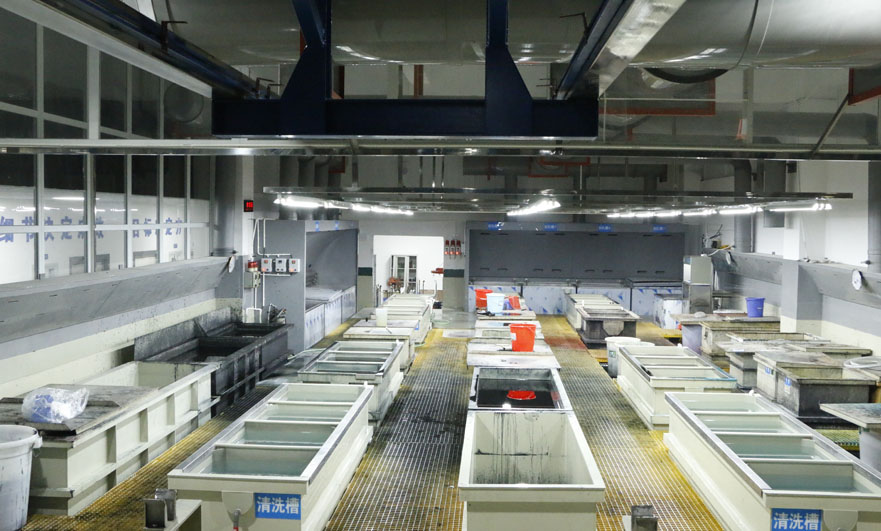
Preheating: Steel is heated in a furnace to temperatures usually exceeding 500°C (932°F). The specific temperature and duration depend on the desired effect and the type of material.
Oxidation: At high temperatures, the steel undergoes a reaction with oxygen, resulting in the formation of an oxide layer, typically iron oxide. This process can take place in a controlled oxygen environment.
Cooling and Sealing: After the treatment, the steel is typically cooled and may be sealed to stabilize the oxide layer and provide lasting protection.
Black oxide is commonly used to enhance the appearance of steel, giving it a deep black or gray-black surface. While this treatment provides some level of corrosion resistance, it is not as durable as some other corrosion-resistant methods. Therefore, black oxide is often employed in applications where appearance is prioritized over extreme corrosion resistance, such as decorative items and the exterior components of military equipment.
Steel Black Oxide Surface Treatment Advantages and Disadvantages
The advantages and disadvantages of black oxide surface treatment for steel are as follows:
Advantages:
Enhanced Appearance: Black oxide imparts a sleek and visually appealing black or gray-black finish to steel, enhancing its overall appearance.
Low Reflectivity: The black oxide coating has low reflectivity, reducing glare and making it suitable for applications where light reflection is undesirable.
Moderate Corrosion Resistance: While not the most corrosion-resistant method, black oxide provides a reasonable level of protection against corrosion, particularly in indoor or mildly humid environments.
Cost-Effective: Black oxide is generally more cost-effective compared to some other corrosion-resistant treatments, making it an economical choice for many applications.
Dimensional Stability: Black oxide does not significantly alter the dimensions of the steel, making it suitable for components that require precise sizing.
Improved Lubricity: Black oxide can enhance the lubricity of the steel surface, reducing friction and improving its performance in moving parts.
Environmentally Friendly: The black oxide process is often considered environmentally friendly as it typically does not involve the use of hazardous chemicals.
Disadvantages:
Limited Corrosion Resistance: Black oxide provides only moderate corrosion resistance and is not suitable for highly corrosive environments or extended outdoor exposure.
Surface Fragility: The black oxide layer can be relatively thin and may wear off over time with friction or abrasive contact.
Maintenance: Steel with a black oxide finish may require periodic maintenance to retain its appearance and corrosion resistance.
In summary, black oxide surface treatment for steel offers aesthetic and moderate corrosion-resistant benefits at an economical cost, but it may not be suitable for applications with demanding corrosion protection requirements or harsh environmental conditions.
Which Metals are Suitable for Black Oxidation?
Metals material suitable for black surface treatment include:
Steel: Steel is one of the most commonly treated metals for black surface finishes. Black oxide and other blackening methods are frequently applied to steel components.
Stainless Steel: Stainless steel can also undergo black surface treatments, often for aesthetic or anti-reflective purposes.

Aluminum: While less common, certain aluminum alloys can be blackened using specialized processes, offering both a visually appealing and protective finish.

Copper: Copper is another metal that can receive black surface treatments, though it is less common compared to steel and aluminum.
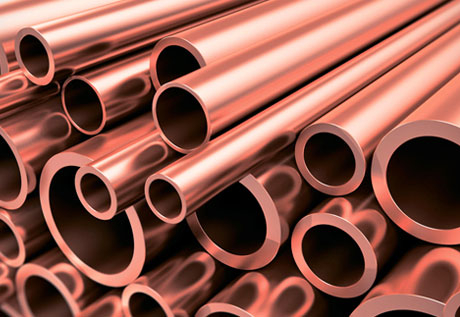
Brass: Brass components can be blackened to achieve a unique appearance and corrosion resistance.
Bronze: Bronze, like brass, can be subjected to black surface treatments to enhance its appearance and protective qualities.
Zinc: Zinc alloys can also be treated to achieve a black surface finish, although it is less common compared to other metals.
Cast Iron: Cast iron components, such as decorative elements or architectural features, can undergo blackening processes to enhance their aesthetics.
It’s important to note that the specific method and suitability for black surface treatment may vary depending on the metal’s composition and intended use.
What Surface Effects do Black Steel Parts Exhibit?
Blackened steel components exhibit the following surface effects:
Deep Black Appearance: Blackened steel features a deep black or gray-black surface finish, which imparts a sleek and visually appealing aesthetic.
Low Reflectivity: The black oxide or blackening process results in a surface with low reflectivity. This reduces glare and makes it suitable for applications where minimizing light reflection is important.
Enhanced Texture: The treatment can enhance the texture and detail of the steel’s surface, adding depth and character to the material.
Rust Resistance: While not a rust-proofing method, blackened steel provides a degree of resistance to rust and corrosion, particularly in indoor or mildly humid environments.
Uniform Color: Black oxide treatment typically results in a uniform and consistent black color across the entire surface of the steel component.
Smooth Finish: The blackening process can create a smooth and uniform surface, which is often desirable for both aesthetic and functional reasons.
Distinctive Appearance: Blackened steel has a unique and distinctive appearance that is sought after in architectural, automotive, and decorative applications.
These surface effects make blackened steel a popular choice for a wide range of applications where both aesthetics and some degree of corrosion resistance are important considerations.
Black Oxidation and Other Surface Treatments on Steel: Differences, Surface Effects and Cost Comparison
Differences, Surface Effects, and Cost Comparison of Black Oxide Steel and Other Surface Treatments:
Black Oxide Steel:
Differences: Black oxide is a chemical conversion coating that forms a thin, black layer on the steel’s surface. It primarily enhances aesthetics and provides modest corrosion resistance.
Surface Effects: Black oxide results in a deep black or gray-black appearance, low reflectivity, and a smooth finish. It offers corrosion resistance suitable for indoor and mildly humid environments.
Cost: Black oxide is generally cost-effective compared to more complex treatments.

Electroplating (Zinc, Nickel, Chrome):
Differences: Electroplating involves depositing a layer of metal (e.g., zinc, nickel, chrome) onto the steel’s surface through an electrochemical process. It offers enhanced corrosion protection but may alter the base material’s appearance.
Surface Effects: Electroplated coatings vary; zinc plating provides a bright finish, nickel offers corrosion resistance, and chrome provides a shiny, reflective appearance.
Cost: Electroplating can be more expensive due to the added material cost and process complexity.

Powder Coating:
Differences: Powder coating is a dry finishing process that involves applying a free-flowing, dry powder to the steel, which is then cured under heat to create a durable, protective layer. It provides excellent corrosion resistance and durability.
Surface Effects: Powder coating offers a wide range of colors and finishes, including matte, glossy, and textured options.
Cost: While powder coating can be costlier than black oxide, it provides superior protection and versatility in appearance.
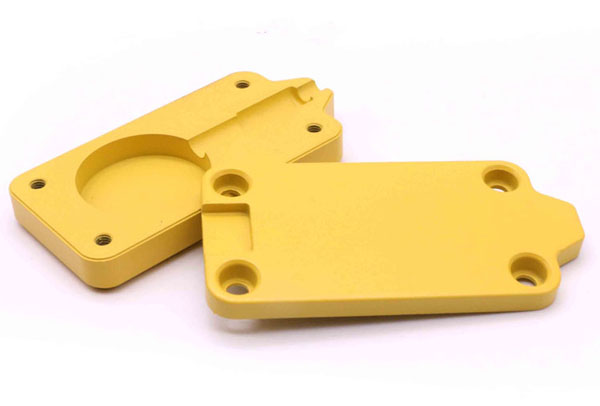
Painting (Liquid Coating):
Differences: Painting involves applying liquid paint to the steel’s surface, which forms a protective and decorative coating. It offers a broad color palette and can be customized.
Surface Effects: Paint provides versatility in color and finish but may not be as durable as other methods.
Cost: Painting costs can vary widely based on the type of paint and complexity of the application.
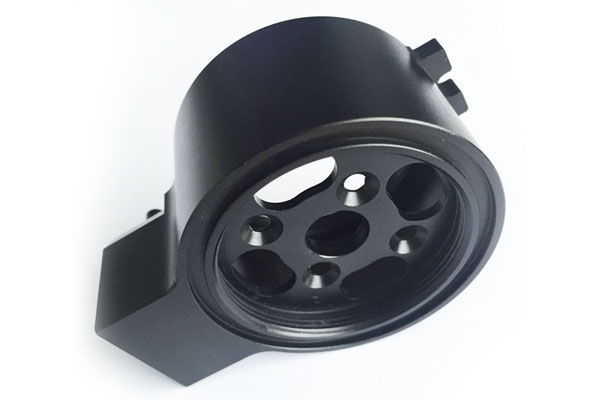
In summary, black oxide steel primarily enhances aesthetics and offers modest corrosion resistance at a lower cost. Electroplating, powder coating, and painting provide varying levels of protection, appearance options, and durability, but they are generally more expensive than black oxide treatment. The choice depends on the specific application’s requirements for both protection and appearance, as well as budget considerations.
Steel Black Surface Treatment Application
Applications of Black Oxide Surface Treatment on Steel:
Firearms Manufacturing: Black oxide is extensively used in the firearms industry to provide a durable, non-reflective, and corrosion-resistant finish on gun barrels, frames, and components.
Automotive Components: Black oxide-treated steel finds application in automotive parts such as exhaust systems, engine components, and decorative trim, enhancing both aesthetics and corrosion resistance.
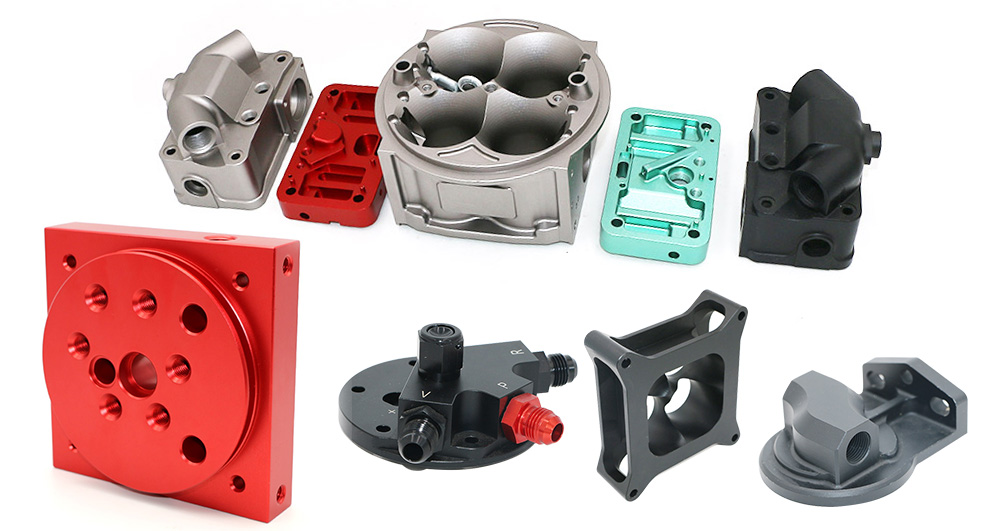
Architectural Elements: In architectural design, black oxide steel is employed for railings, balusters, and ornamental features due to its elegant appearance and suitability for both indoor and outdoor installations.
Aerospace Components: The aerospace sector utilizes black oxide treatment on various components, including fasteners and structural elements, where corrosion resistance and a non-reflective surface are critical.
Industrial Equipment: Black oxide is commonly used on industrial machinery and equipment components to reduce light reflection and protect against corrosion, particularly in manufacturing environments.
Tooling and Precision Instruments: Precision instruments, machine tools, and cutting equipment benefit from black oxide’s non-glare properties and moderate corrosion resistance.
Consumer Goods: Blackened steel is found in consumer products like appliances, sporting goods, and hardware items, where a sleek appearance and some corrosion protection are desired.
Optical Instruments: In optical equipment such as microscopes, cameras, and telescopes, black oxide-treated components reduce glare and reflections, improving optical performance.
Military and Defense Equipment: The military employs black oxide-coated steel in various equipment, including firearms, tactical gear, and military vehicles, to minimize reflection and enhance durability.
Decorative Hardware: For decorative hardware applications like handles, knobs, and hinges, black oxide steel combines an appealing aesthetic with corrosion resistance.
Medical Devices: Some medical instruments and equipment use black oxide for its non-reflective properties and resistance to the effects of sterilization processes.
Electronics: Certain electronic components and enclosures benefit from black oxide treatment, particularly in applications where electromagnetic interference (EMI) shielding and corrosion resistance are needed.
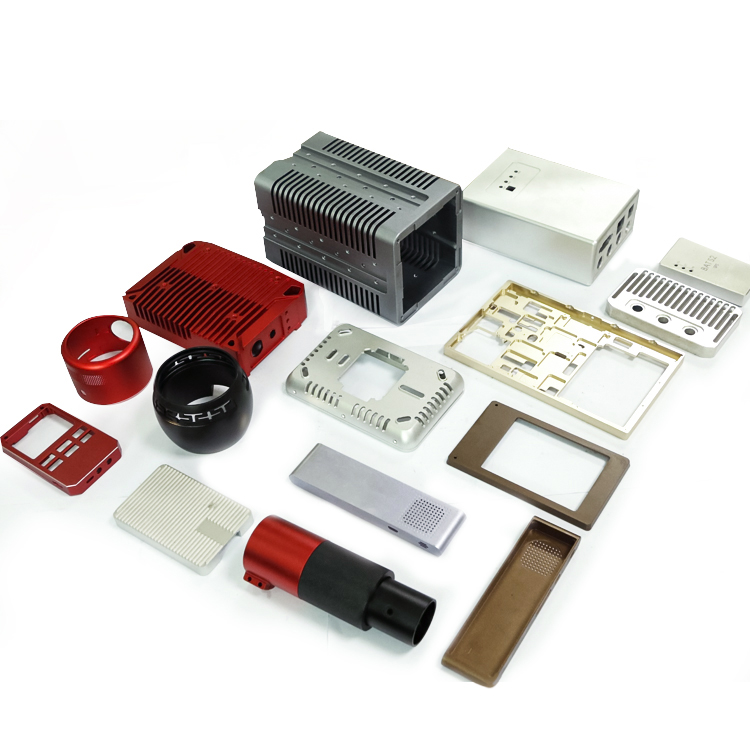
Black oxide surface treatment on steel is versatile, providing an attractive appearance while offering reasonable protection against corrosion and glare reduction. Its wide range of applications spans various industries where aesthetics and functionality are essential considerations.
Problems and Precautions for Black Oxidized Steel Parts
Challenges and Considerations for Black Oxide Surface Treatment on Steel Parts:
Challenges:
Uniformity of Finish: Achieving a consistent and uniform black oxide finish across the entire steel component can be challenging, especially on intricate or complex geometries.
Surface Preparation: Proper surface cleaning and preparation are crucial to ensure the steel surface is free of contaminants, oils, and rust, which can affect the quality of the black oxide finish.
Thickness Control: Controlling the thickness of the black oxide layer to meet specific requirements can be a challenge, as it requires precise control over the process parameters.
Adhesion and Durability: Ensuring good adhesion of the black oxide layer and its durability over time, especially in demanding environments, is a significant concern.
Post-Treatment Handling: Careful handling of the parts after black oxide treatment is essential to prevent damage or marring of the finished surface.
Limited Corrosion Resistance: Black oxide provides only modest corrosion resistance, making it less suitable for prolonged exposure to harsh environments. It may require additional protective measures for extended outdoor use.
Surface Wear: The black oxide layer can be relatively thin, making it susceptible to surface wear and abrasion over time, especially in high-friction applications.
Maintenance: Maintaining the appearance of black oxide steel may require periodic cleaning and reapplication of protective coatings to prevent corrosion or surface degradation.
Surface Prep: Proper surface preparation, including thorough cleaning and removal of any contaminants, is crucial to ensure the effectiveness and durability of the black oxide finish.
Considerations:
Material Composition: Different steel alloys may react differently to the black oxide process, so understanding the material composition and its impact on the process is crucial.
Process Parameters: Fine-tuning process parameters such as temperature, time, and chemicals is essential to achieve the desired black oxide finish and ensure consistent results.
Quality Assurance: Implementing quality control measures, including regular inspections and testing, to verify the quality and properties of the black oxide finish is vital.
Environmental and Safety Compliance: Adhering to environmental and safety regulations associated with the chemicals and processes involved in black oxide treatment is important.
Surface Inspection: Thoroughly inspecting the steel parts post-treatment to identify any defects, unevenness, or discolorations and taking corrective actions as needed.
Customer Specifications: Meeting specific customer requirements and specifications regarding the appearance, thickness, and properties of the black oxide layer is crucial for customer satisfaction.
Post-Treatment Protection: Applying additional protective coatings or sealing to enhance the longevity and durability of the black oxide finish, especially in challenging environments.
Application Environment: Consider the operating environment of the steel components. If they will be exposed to corrosive chemicals, saltwater, or extreme weather conditions, additional corrosion protection measures may be necessary.
Maintenance Schedule: Establish a maintenance schedule to monitor and upkeep the black oxide finish, especially in applications where appearance is critical.
Usage Intensity: Assess the level of wear and tear the components will endure. In high-wear applications, consider alternative surface treatments or coatings for improved durability.
Coating Compatibility: Ensure compatibility between the black oxide finish and any lubricants or coatings that may be applied to the steel components.
Regulations and Standards: Be aware of any industry-specific regulations or standards related to surface treatments, as well as any safety or environmental considerations associated with the black oxide process.
Quality Control: Implement quality control measures to verify that the black oxide finish meets the desired aesthetic and performance criteria.

Alternative Treatments: Depending on the application’s requirements, explore alternative surface treatments or coatings that offer superior corrosion resistance or wear resistance.
Periodic Inspection: Regularly inspect black oxide-treated components for signs of corrosion, wear, or damage, and take prompt corrective actions when needed.
Cleaning Methods: Use appropriate cleaning methods and materials to avoid damaging the black oxide finish during maintenance.
Safety Precautions: Adhere to safety guidelines and precautions when handling chemicals and conducting black oxide processes to ensure the well-being of personnel and compliance with safety regulations.
Addressing these challenges and considerations ensures that the black oxide surface treatment on steel parts meets the desired aesthetic, functional, and durability criteria, resulting in a high-quality and reliable finished product.
Conclusion
Do you know how to choose the right finish for your project? CNCMF has 15 years of experience in surface treatment experts to choose the appropriate surface treatment for you to improve the surface texture and performance of black oxidized stainless steel CNC machined parts.
Learn about the black oxide surface treatment process, benefits and applications in this article. If you want to know more about black oxidation surface treatment, please contact us immediately. CNCMF can provide a wide range of CNC machining and manufacturing capabilities and surface treatment services for stainless steel, aluminum, titanium, copper and other materials. Our team of professional engineers can select the appropriate surface treatment for you to meet all your black oxide stainless steel CNC machined parts production needs. , get the best, competitive price. Why not give CNCMF a try and contact us now to get a quote.

Steel Black Oxide FAQs
Frequently Asked Questions (FAQs) About Black Oxide Surface Treatment on Steel:
Q1: Will black oxide-coated bolts rust?
A1: Black oxide-coated bolts have a degree of corrosion resistance but are not rust-proof. The black oxide layer provides moderate protection against rust, but in harsh environments or when exposed to moisture for extended periods, some corrosion may occur. For more corrosion-resistant applications, consider stainless steel bolts.
Q2: Why is black oxide used on stainless steel?
A2: Black oxide treatment is applied to stainless steel for several reasons. It enhances the steel’s aesthetics by providing a sleek, non-reflective appearance. Additionally, it can improve the steel’s resistance to galling (wear caused by friction) and reduce light reflection in applications where glare is undesirable.
Q3: Is black oxide safe for food contact surfaces on stainless steel?
A3: Black oxide itself is not considered food-safe, as it is a surface treatment and not a food-grade coating. If stainless steel parts with black oxide finish are used in food contact applications, it’s crucial to ensure that the black oxide layer does not come into direct contact with food. Proper cleaning and sanitation procedures should be followed.
Q4: Can black oxide be applied to all types of steel?
A4: Black oxide can generally be applied to various types of steel, including carbon steel and alloy steel. However, the specific composition of the steel and the desired finish should be considered. Different steel alloys may react differently to the black oxide process, affecting the final appearance and properties.
Q5: Does black oxide affect steel’s mechanical properties?
A5: Black oxide is a thin surface treatment and typically does not significantly alter the mechanical properties of the underlying steel. However, it’s essential to control the treatment process carefully to prevent any adverse effects.
Q6: Can black oxide be used in outdoor applications?
A6: While black oxide does provide some corrosion resistance, it is generally more suitable for indoor or mildly humid environments. In outdoor applications exposed to harsh weather conditions, additional protective coatings may be necessary to maintain the finish’s integrity.
Q7: How should black oxide-coated steel be maintained?
A7: To maintain the appearance and integrity of black oxide-coated steel, avoid abrasive cleaning methods that may remove the finish. Instead, clean with mild, non-abrasive detergents and soft cloths. In corrosive environments, periodic inspection and reapplication of protective coatings may be necessary.
These FAQs address common questions about black oxide surface treatment on steel, covering topics such as corrosion resistance, suitability for stainless steel, and maintenance considerations.